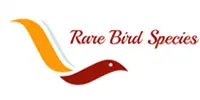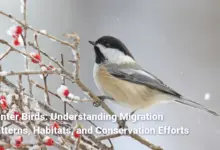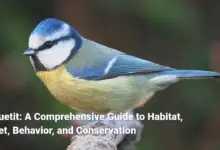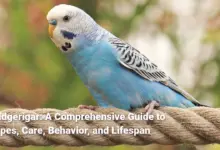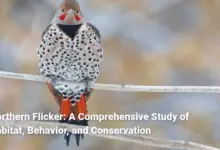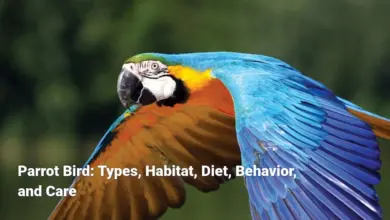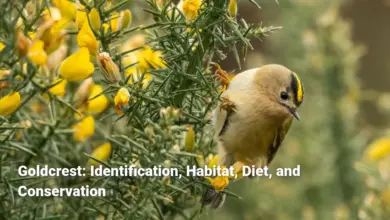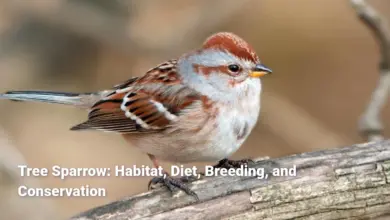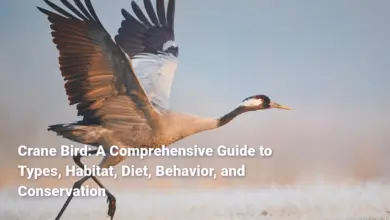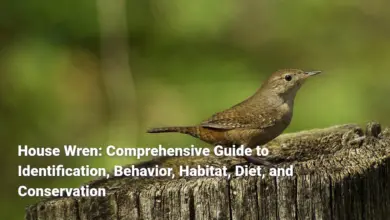Pintail Duck: Description, Habitat, Diet, and Behavior
The Northern Pintail Duck, scientifically known as Anas acuta, is a captivating waterfowl species celebrated for its elegance and distinct characteristics. With a grace that is often likened to a ballerina on water, this medium-sized dabbling duck captures the hearts of birdwatchers and nature enthusiasts alike. Its unique features not only make it visually striking but also play a crucial role in its adaptability to varied habitats. While many may admire them during migratory periods, the Pintail holds an essential position in various ecosystems, demonstrating remarkable resilience and social structure. This article will explore a comprehensive overview of the Pintail duck, delving into its physical characteristics, sexual dimorphism, habitat distribution, migratory patterns, breeding habits, social behavior, and fascinating facts that highlight its unique nature.
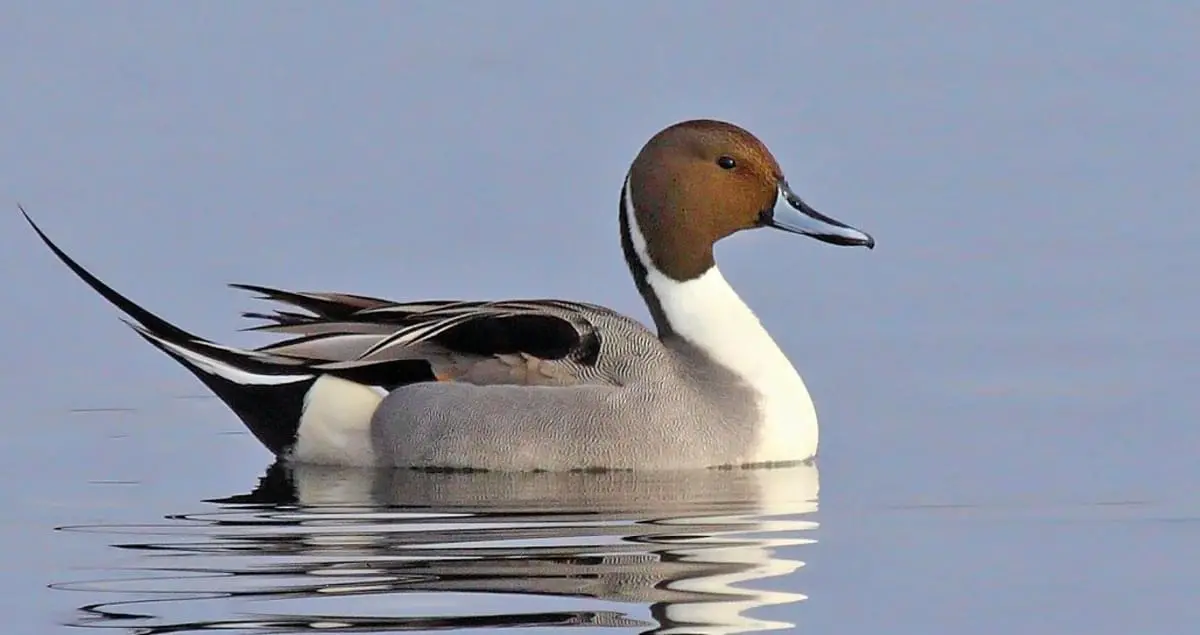
Description of Pintail Duck
The Northern Pintail is a paragon of natural beauty among waterfowl. Known for its elongated neck and pointed tail, this duck embodies elegance, reminiscent of a dancer gracefully poised in midair. In fact, its slender profile and smooth, streamlined shape allow it to glide effortlessly over water and through the air, making it a proficient flyer. The combination of striking coloration in males and the more subdued tones in females offers an interesting visual contrast reflective of their ecological roles. Their unique physical traits, alongside their social and complex behaviors, contribute to their significance in the avian world. For instance, a male Pintail, adorned in chocolate brown with a shiny white breast and a long tail that seems to pierce through the air, is often seen flaunting its beauty as it courts a female. The Pintail duck is not merely a visual spectacle but an essential subject in understanding avian biology and ecology.
Physical Characteristics
Pintail ducks possess a range of compelling physical traits that distinguish them from other duck species. The following table summarizes their size, shape, and coloration:
| Characteristic | Male Pintail | Female Pintail |
|---|---|---|
| Length | 23 – 30 inches (58.5 – 76 cm) | 20 – 25 inches (51 – 63.5 cm) |
| Weight | 23 – 51 ounces (650 – 1450 g) | 18 – 35 ounces (510 – 1000 g) |
| Wingspan | Approx. 34 inches (86.4 cm) | Approx. 31 inches (79 cm) |
| Head Coloration | Dark brown with white neck collar | Mottled brown with pale facial markings |
| Body Coloration | Grayish sides with white stripes | Drab brown with streaky patterns |
| Tail Characteristics | Long, pointed tail | Shorter, rounded tail |
Males are striking with their dark chocolate-brown head, a prominent white stripe running along their neck, and an unblemished white breast that shimmers under sunlight. Their grayish flanks complete a visual palette that sings of grace and style. In stark contrast, female Pintails exhibit elegant complexities, adorned in mottled browns and grays. This coloration is an evolutionary advantage, providing effective camouflage against terrestrial predators, especially during the nesting season.
Their flight is marked by long, narrow wings that add to their aesthetic allure. The vibrant green speculum, visible during flight, is a hallmark of this species. Northern Pintails are also dabbling ducks, which means they forage by tipping forward to reach food beneath the water’s surface. This feature allows them to interact dynamically with their environment, displaying agility both in the water and in the air.
Sexual Dimorphism
Sexual dimorphism in Pintail ducks, especially between the Northern Pintail Duck (Anas acuta) and the White-cheeked Pintail (Anas bahamensis), emphasizes significant differences in size and physical appearance. It’s fascinating to observe how these differences contribute not only to individual identity but also to mating strategies.
Male vs. Female Characteristics
| Feature | Northern Pintail Male | Northern Pintail Female |
|---|---|---|
| Coloration | Dark brown head, white breast | Mottled brown with streaking |
| Size | Generally larger, about 23 – 30 inches | Smaller, ranging 20 – 25 inches |
| Tail Length | Longer, prominent pointed tail | Shorter tail with less prominence |
| Behavior | Engages in elaborate courtship displays | Subtle behaviors, focused on nesting |
The male Pintail’s courtship behaviors are particularly notable. As breeding season approaches, males exhibit dramatic displays, showcasing their beautiful plumage to attract females. These displays include head bobbing and competitive flights around potential mates. Male Pintails rely on their striking aesthetics to woo females, which requires them to maintain their vibrant colors and plumage throughout the mating season.
In contrast, female Pintails embody a more understated yet effective approach. Their mottled brown feathers serve as natural camouflage when nesting, allowing them to blend seamlessly into their surroundings and protect their young from predators. This division of roles underscores a larger narrative within the Pintail species, where each gender plays a vital role in the survival and continuation of the species.
Habitat and Distribution
The Northern Pintail Duck has a wide-ranging habitat preference that significantly influences its migration and breeding patterns. These ducks are primarily found in wetlands across North America, Europe, and Asia, favoring marshes, ponds, lakes, rivers, and flooded fields for foraging and nesting. Their ability to thrive in diverse ecological environments is a testament to their adaptability.
| Breeding Range | Wintering Range |
|---|---|
| North America | Southern United States |
| Alaska, Canada, Midwest | Mexico, northern South America |
| Europe & Asia | |
| Northern regions of Europe |
During summer, Pintails migrate north to breed in areas characterized by seasonal wetlands, particularly in prairie and tundra ecosystems. Their nesting sites often resemble grasslands, where they build their nests away from water sources, which provides protection from predation. Notably, the choice of nesting on dry ground is relatively rare among waterfowl and demonstrates their unique adaptations.
As winter approaches, the Northern Pintail migrates southward in search of milder climates and more abundant food sources. They are spotted commonly in shallow estuaries, lakes, and agricultural fields in regions such as California’s Central Valley, Texas, and parts of Louisiana and Mexico. The dynamic shift between summer breeding habitats and wintering grounds illustrates the Pintail’s dependency on specific environmental conditions to fulfill their life cycle requirements efficiently.
Breeding Habitat
The breeding habitats of Northern Pintails are essential to their reproductive success, and they are meticulously selected to ensure optimal conditions for nesting and raising young. Pintails prefer seasonal wetland areas that undergo flooding these habitats are rich in plant diversity and provide ample food sources for adult birds and their ducklings alike.
They generally nest on dry ground, often in sites characterized by short or sparse vegetation. This positioning allows Pintails to avoid competition for nesting resources that typically occur closer to water bodies. Their nests are typically constructed in slight depressions in the ground, lined with soft down and grasses for insulation.
- Breeding Season: April to June
- Nesting Details:
- Average clutch size: 6 to 12 eggs
- Incubation period: 21 to 25 days
- Nesting success: ✓ Often protected by the female’s subtle coloration
- Nest location: Typically 10 to 50 yards away from water
The importance of the chosen breeding habitat cannot be overstated. Nesting too near water could expose eggs to flooding or predation. Consequently, Pintails exhibit unique nesting habits that speak to natural instincts for survival and success.
Wintering Grounds
During the winter months, Northern Pintails migrate to warmer climates where adequate food and safe environments are available for foraging. Their wintering grounds feature shallow wetlands, estuaries, and flooded agricultural fields, which support the food sources necessary for sustaining their populations during this critical period.
- Typical Wintering Areas:
- Central Valley, California
- Gulf Coast of Texas and Louisiana
- Northern Mexico
These habitats are crucial not only for food availability but also for social interactions among Pintails. During winter, these ducks congregate in large flocks, which serves dual purposes safety from predators and increased foraging efficiency. The flocks can reach significant sizes, providing a spectacular display as they take flight in unison, a sight reminiscent of a well-coordinated orchestral performance.
Some populations of Pintails even venture as far down as northern South America, demonstrating their long-distance migratory capabilities. This migratory behavior highlights their adaptability to changing environmental conditions and reliance on specific habitat types throughout different seasons.
Diet of Pintail Duck
The dietary habits of the Northern Pintail Duck are diverse, reflecting their omnivorous nature. Pintails primarily consume both plant and animal materials, adapting their diets based on seasonal availability. During the winter months, they rely on various plant-based foods, while in the spring and summer, their diet shifts to include more protein-rich animal matter.
| Season | Dietary Preferences | Common Food Sources |
|---|---|---|
| Fall/Winter | Primarily Plant Material | Seeds, grains, rhizomes, pondweeds, bulrushes, waste grains from agriculture |
| Spring/Summer | Richer in Animal Matter | Insects, mollusks, crustaceans, small fish, and young plants |
During the fall and winter, their diet consists primarily of plant material, including grains from agricultural fields like rice, corn, and barley. This feeding behavior allows Pintails to capitalize on human agriculture, making them highly adaptive yet at times a nuisance for farmers.
When spring arrives, the nutritional demands of the Pintails shift significantly as they prepare for nesting and raising young. They seek out animal matter, particularly insects and invertebrates, which provide essential protein for both adults and ducklings. Young ducklings, in particular, depend heavily on protein-rich meals to ensure healthy growth and development.
Plant Material Consumption
Northern Pintails are well-adapted to exploit a variety of food sources within their habitats. Their plant-based diet predominantly includes seeds and roots from aquatic and semi-aquatic plants, which are plentiful in their wetland environments. The consumption of agricultural waste grains is particularly significant during migration periods, where they can often be found foraging in harvested fields.
The adaptability in their diet is vital for the Pintails’ survival, especially in colder months. They have been observed consuming:
- Rice and barley from agricultural fields
- Pondweeds and water lilies
- Bulrushes and other aquatic vegetation
Such a varied diet not only supports their energy needs but also plays a role in maintaining the ecological balance of the wetlands they inhabit.
Animal Matter Consumption
As spring approaches and Pintails prepare for breeding, there is a marked increase in their intake of animal-based food sources. They actively pursue insects, snails, and crustaceans as essential components of their diet, which contributes to the well-being of their ducklings.
The animal matter that Pintails consume during this period includes:
- Aquatic invertebrates: insects, snails, and crustaceans
- Land-based insects that they forage when on land
- Small fish or tadpoles when available
This dietary shift is a fundamental aspect of their reproductive strategy, ensuring both the adults and younglings receive adequate nutrition during critical growth phases.
Foraging Behavior
Foraging strategies employed by Northern Pintails are primarily categorized as dabbling, a technique that involves the bird tipping forward to graze on the water’s surface or pecking at submerged food sources. This method allows Pintails to utilize a wide variety of food resources efficiently.
Foraging Techniques:
- Dabbling: Tipping forward to reach food just beneath the surface.
- Tipping: Submerging their heads and upper bodies while keeping the tail visible.
- Walking: Foraging on land for seeds and grains, particularly in agricultural fields.
Their ability to adapt their foraging techniques based on the availability of resources emphasizes their ecological versatility and enhances their survival rates across various habitats.
Migration Patterns
The migratory patterns of Northern Pintails are an essential aspect of their life cycle, demonstrating their remarkable adaptability and resilience. These ducks engage in seasonal migrations, traveling between breeding and wintering grounds, which often cover extensive distances.
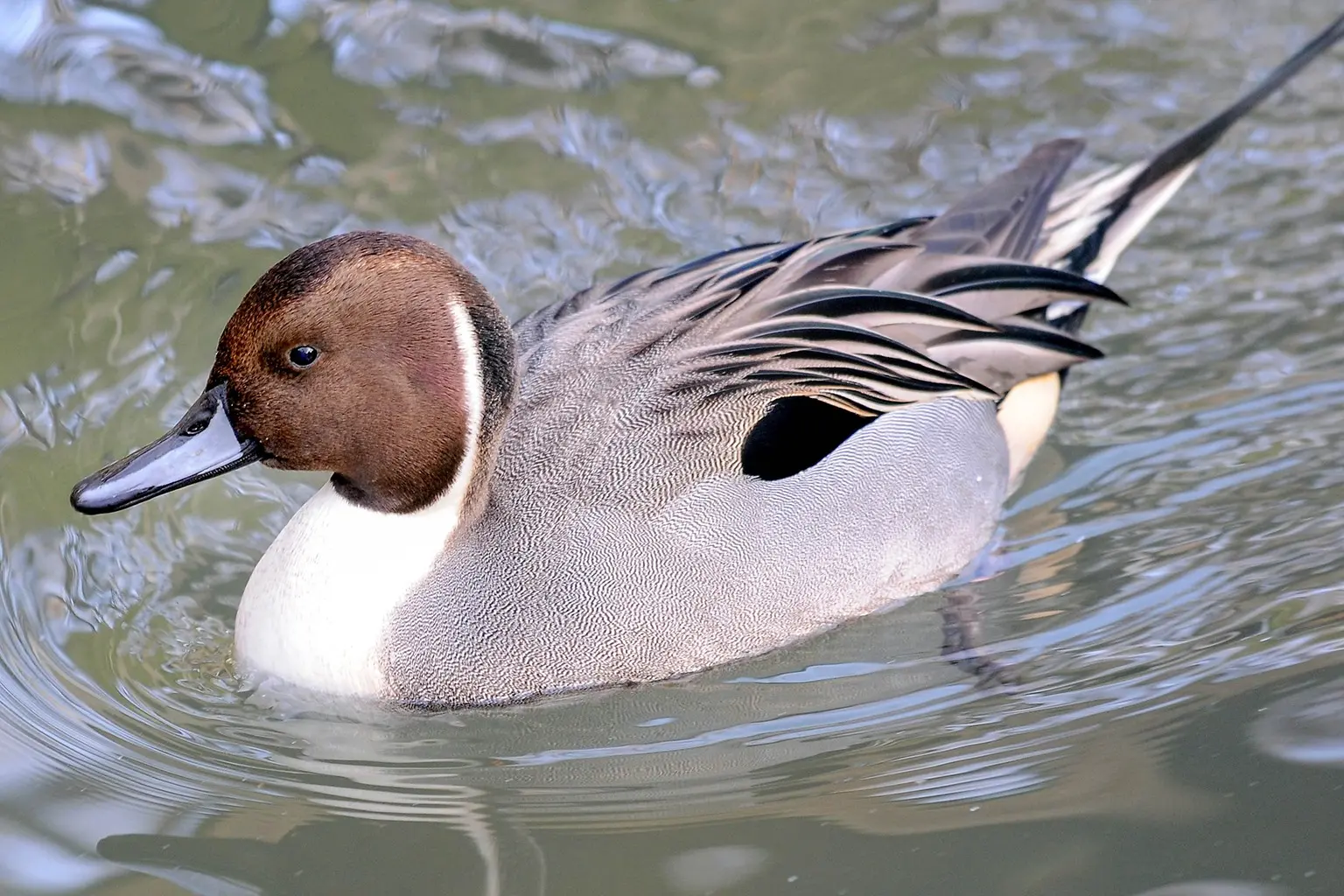
Seasonal Migration
As spring approaches, Pintails embark on their journey northward to their breeding ranges, which typically include the northern parts of North America, Europe, and Asia. The following points illustrate their migratory journey:
- Spring Migration: Generally begins in late March to early April; males arrive first to establish territories.
- Autumn Migration: Starts in late October through November as temperatures drop; Pintails utilize various flyways, often grouping into large flocks during their travels.
For Pintails, migration serves a dual purpose: it allows them to escape harsh winter conditions while searching for optimal breeding habitats. The timing of their migration is heavily influenced by environmental factors, including temperature and availability of food resources.
Long-Distance Flight
Northern Pintails are recognized for their impressive long-distance migration capabilities. Average one-way journeys can span over 3,000 kilometers (about 1,900 miles) toward their wintering grounds. Remarkably, some Pintails have been known to undertake nonstop flights covering distances up to 1,800 miles.
Migration Facts:
- Migratory Speed: Can reach up to 77 kilometers per hour (48 miles per hour).
- Flight Strategy: Predominantly nocturnal, flying at night minimizes predation risk.
- Behavioral Adaptations: Utilize flyways and rest stops along their migratory routes.
The synchronized movement of Pintail flocks, often observed during migration, serves not only social purposes but aids in their navigation and the safety of individual birds within their groups.
Breeding and Reproduction
The breeding behaviors of the Northern Pintail are integral to the continuation of the species. Their reproductive strategies demonstrate a balance between traditional nesting practices and responsive adaptations to changing environments.
Nesting Habits
Pintail ducks are known for their unique nesting behaviors, which commence as early as the melting of ice in late April. When selecting a nesting site, females often choose grasslands or areas with sparse vegetation, favoring locations that are well-hidden from potential predators.
- Nesting Sites: Typically, nests are 10 to 50 yards away from water.
- Nest Construction: Females scrape out a small depression and line it with grasses and down.
- Clutch Size: Usually lays between 6 and 12 eggs, which are incubated solely by the female for 21-25 days.
Nesting away from water, although uncommon among most duck species, is a calculated strategy that offers increased safety during critical reproductive stages. The choice to conceal nests prevents predation and enhances the likelihood of hatch success.
Incubation Period
The incubation period for Pintail ducks is relatively short; typically, it lasts between 21 and 25 days. During this time, the female is solely responsible for keeping the eggs warm, leaving only briefly to forage for food.
- Temperature Control: The female’s constant presence is crucial to maintaining optimal heat levels for proper embryonic development.
- Post-Hatching: Ducklings are precocial and can walk and swim shortly after hatching, which is advantageous for avoiding predators.
The quick development of ducklings following hatching helps ensure their survival in a world filled with threats, increasing their chances of reaching maturity.
Duckling Development
Pintail ducklings exhibit rapid growth and development, showcasing a range of fascinating behaviors that facilitate their survival. After hatching, the female leads the ducklings to water, where they learn to forage for food.
- Learning to Forage: Ducklings typically begin foraging shortly after hatching, relying heavily on maternal guidance.
- Fledging: Ducklings fledge after approximately 38 to 52 days, indicating their readiness for independence.
- Survival Strategies: They rely on camouflage, social learning, and maternal vigilance to navigate potential predation threats.
This swift developmental trajectory prepares the ducklings for life outside the nest, emphasizing the Pintail’s adaptive methods in a competitive and challenging environment.
Behavior and Social Structure
Northern Pintails boast a unique social structure that plays a crucial role in their interactions, especially during breeding and migration periods. Their behaviors reflect a combination of social bonding, courtship rituals, and adaptive strategies for survival.
Feeding Behavior
The feeding behaviors of Northern Pintails are predominantly characterized by their dabbling and tipping techniques, demonstrating their adaptability as foragers. During summer months, they increase their protein intake, necessitating a diversified diet based on what’s readily available in their ecological niche.
- Dabbling Technique: They tip their bodies forward in water to access submerged food items.
- Foraging Strategies: Pintails can also forage on land for seeds and agricultural crops, further enhancing their feeding flexibility.
Additionally, social dynamics come into play when Pintails feed; they often form mixed-species flocks with other ducks such as Wigeons or Teals, increasing their foraging efficiency while providing safety.
Social Interactions
Pintails demonstrate complex social interactions that vary with the season. During migration and wintering periods, they often gather in large flocks, which not only aids in safety from predators but also enhances their social structure.
- Flocking Behavior: Seen in both migratory and non-migratory periods; large flocks allow for effective foraging.
- Courtship Displays: Male Pintails engage in elaborate courtship rituals, including synchronized flights and vocalizations to establish pair bonds.
This social structure highlights the importance of communal behavior, where individuals learn from one another and adapt to their surroundings effectively.
Flight Behavior
The flight behavior of Northern Pintails is characterized by their strong wings and agile movements, making them adept flyers. Their migratory habits often include nocturnal flights, allowing them to conserve energy and avoid predation.
Flight Traits:
- Speed: Capable of flying at speeds nearing 77 km/h (48 mph).
- Group Flying: They often fly in V-shaped formations during migration, improving aerodynamic efficiency.
- Courtship Flights: Males engage in elaborate flight displays to attract females during the breeding season.
This combination of flight capabilities and social structure contributes to the Pintail duck’s success in navigating both migratory and feeding patterns, reinforcing their ecological niche as adaptable and resilient waterfowl.
Interaction with Humans
The Northern Pintail’s interactions with humans are multifaceted, encompassing aspects such as hunting, economic relevance, and conservation efforts. Understanding these dynamics is essential for acknowledging the impact of human activity on Pintail populations and their habitats.
Hunting Practices
Pintails are among the most sought-after ducks by hunters due to their widespread distribution and appealing characteristics. The hunting season generates substantial revenue for local economies, particularly in regions along their migratory pathways.
- Economic Impact: Hunters spend considerable amounts on gear, licenses, and travel, supporting local services and accommodations.
- Regulated Hunting: The Migratory Bird Treaty Act regulates Pintail hunting to maintain sustainable populations, ensuring that hunting practices align with conservation efforts.
While hunting provides an economic boost, it also necessitates responsible management to preserve populations for future generations.
Economic Importance
Beyond hunting, the economic relevance of Northern Pintails extends to ecotourism and agriculture. The influx of birdwatchers and hunters during peak seasons fosters community growth and infrastructure development within these regions.
- Positive Contributions: Increases in local business activity, including hospitality.
- Negative Impacts: Pintails can also be seen negatively in agricultural contexts, particularly when feeding on crops like rice and grains. This creates tensions between conservation efforts and agricultural interests.
As stewards of local economies, Pintails contribute to diverse aspects of human life, prompting a need for cooperative management strategies that balance ecological health with economic viability.
Interesting Facts About Pintail Ducks
The Northern Pintail Duck harbors an array of intriguing characteristics and behaviors that distinguish it in the avian world. Here’s a list that encapsulates some of the more fascinating aspects of Pintail ducks:
- Nocturnal Foragers: Pintails often prefer foraging at night compared to other duck species.
- Impressive Lifespan: Some individuals are known to live up to 22 years in the wild.
- Unique Nesting Habits: Female Pintails typically nest over half a mile away from water bodies to provide better protection for their young.
- Social Structures: They often form flocks during migration, enhancing their safety and foraging efficiency.
- Defensive Behaviors: Female Pintails exhibit distraction tactics when protecting nests from predators, such as feigning injury to lure threats away.
- Vocal Distinction: Males communicate using a distinctive two-toned whistle, while females produce nasal quacks.
- Migratory Precision: Pintails are known for their nocturnal migration, often traveling in V formations to improve efficiency.
These aspects emphasize their ecological significance and underline the complex interactions Pintails maintain within their environments.
Unique Behavior
Northern Pintails exhibit a range of unique behaviors related to their social structures, territorial disputes, and feeding complexities. Their interactions are not limited to simple foraging or mating habits but extend to more advanced social dynamics.
One fascinating behavior is their elaborate courtship display. During the breeding season, male Pintails engage in impressive aerial displays, showcasing their speed and agility to attract mates. Their performance includes circling flights, head bobbing, and synchronized movements. This not only serves to impress potential partners but also establishes dominance among competing males.
In terms of foraging, Pintails may engage in cooperative feeding behaviors with other duck species. By forming mixed flocks, they can take advantage of different foraging techniques, benefiting from the diverse food sources. This cooperation allows them to thrive in various conditions, ensuring their survival and success as a species.
Speed and Agility
Pintail ducks are renowned for their remarkable speed and agility during flight. Capable of soaring at rates up to 77 kilometers per hour (48 miles per hour), these ducks exhibit a finesse that distinguishes them from many of their waterfowl counterparts. Their long, pointed wings enable them to navigate challenging landscapes while displaying acrobatic grace.
During migration, Pintails often cover staggering distances without stopping for extended periods. This long-distance flight capability is a crucial adaptation that allows them to seek out suitable habitats across seasonal changes. Their impressive agility also aids them in evading predators and quickly adapting to sudden environmental shifts.
Adaptations for Survival
Surviving in the wild requires a deft combination of physical adaptations and behavioral strategies. For Pintail ducks, certain adaptations facilitate their ability to thrive in various habitats.
- Camouflage: Female Pintails possess plumage that blends seamlessly with their surroundings, providing protection during nesting periods.
- Foraging Techniques: Their dabbling behavior allows them to efficiently access essential food sources while minimizing vulnerability to predators.
- Early Breeding: By nesting as soon as conditions allow, Pintails can take advantage of food resources during peak availability, increasing reproductive success.
- Social Learning: Young Pintails learn critical survival behaviors from adult ducks, ensuring the continuation of their cultural knowledge.
These adaptations enhance their resilience and ecological role within their habitats, allowing them to flourish in changing environments.
Conclusion
The Northern Pintail Duck is a remarkable species that combines elegance, resilience, and adaptability. From its striking physical characteristics to its intricate social behaviors and migration patterns, the Pintail exudes a captivating aura. Understanding its breeding habits, feeding strategies, and interactions with humans sheds light on the complexities of this species and emphasizes the importance of conserving its natural habitats. Through responsible practices, we can ensure that these enchanting ducks thrive in our ecosystems for generations to come.
